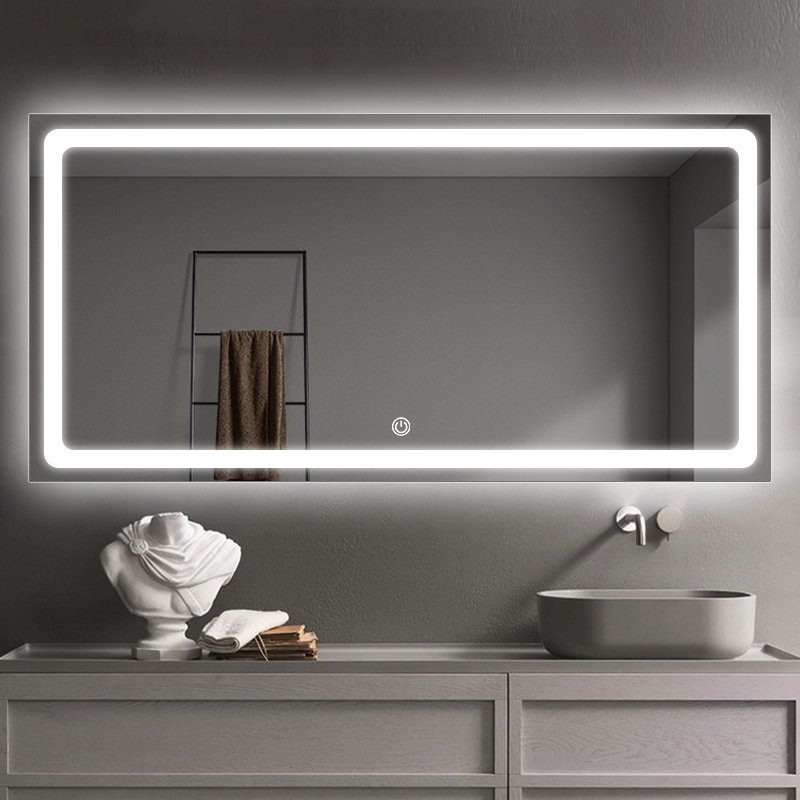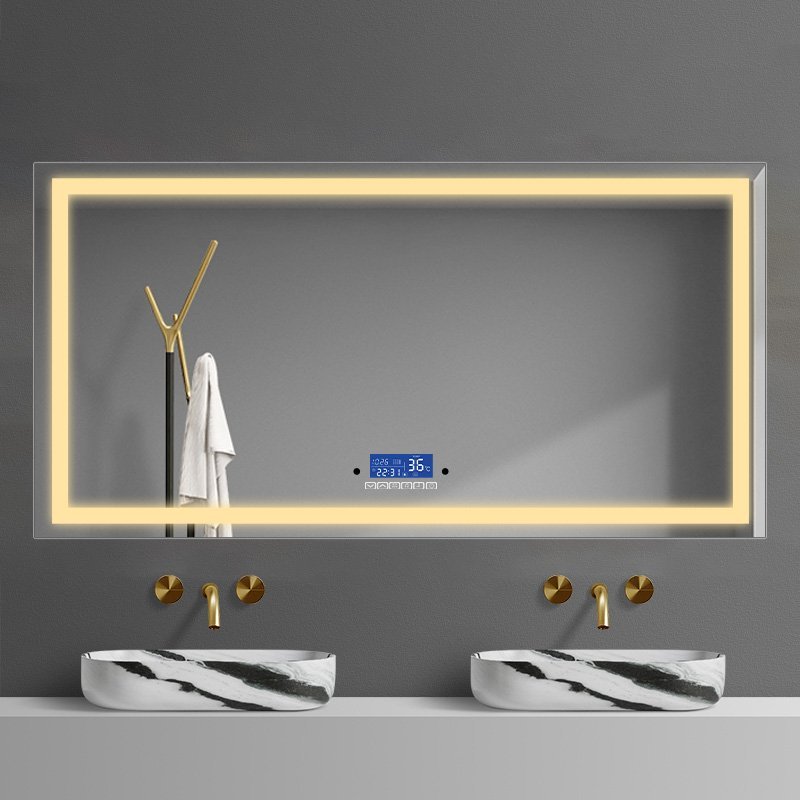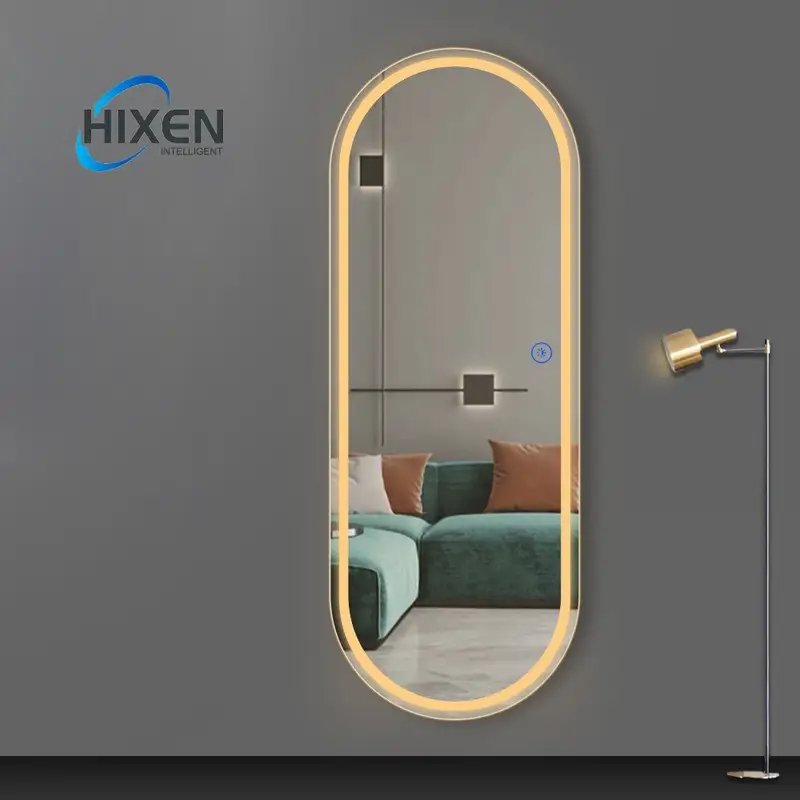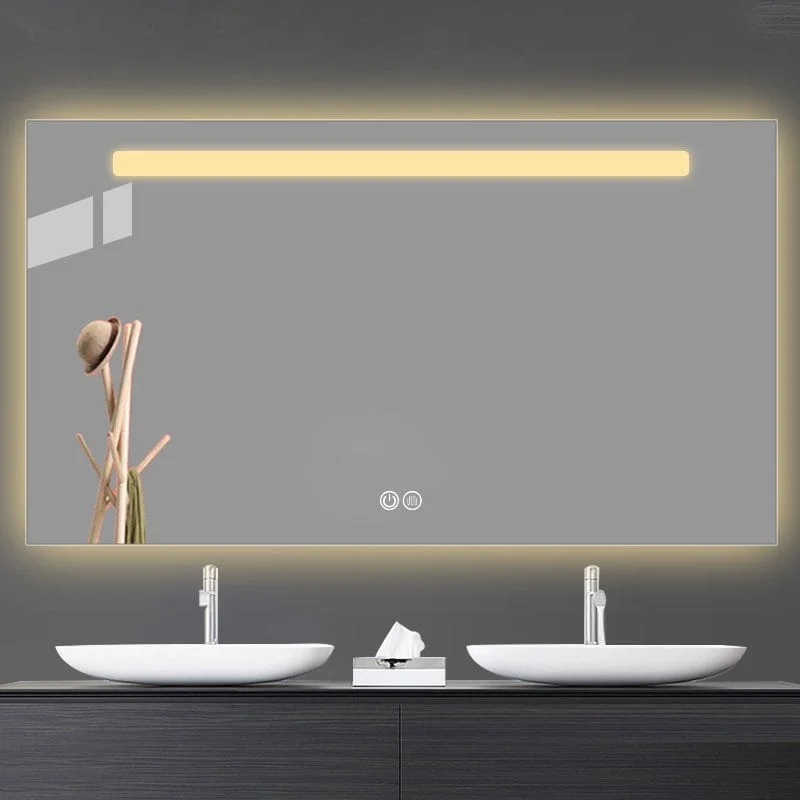Why do bathroom mirrors fog up? Stepping out of a warm shower only to face a completely foggy bathroom mirror is frustrating. You cannot see your reflection, which makes shaving or styling your hair difficult. Understanding why this happens helps you find the right solution.
Bathroom mirrors fog up because warm, moist air from hot water meets the cooler mirror surface. When steam touches the cold glass mirror, it turns into tiny water drops that create a cloudy layer. This happens whenever your mirror is colder than the steamy air around it.
Let us explore why mirrors fog and discover practical ways to keep your bathroom mirror clear all the time.
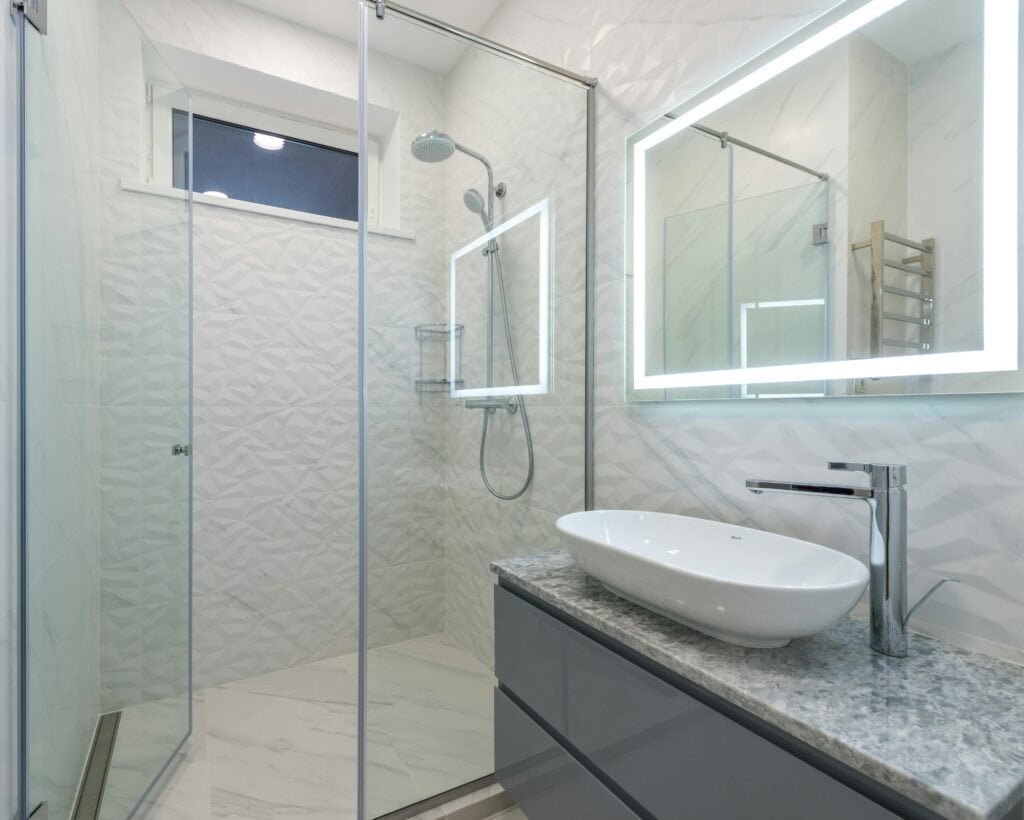
Comparison: Anti-Fog Solutions for Bathroom Mirrors
| Solution Type | Effectiveness Duration | Cost | Maintenance Required | Best For |
|---|---|---|---|---|
| Shaving Cream | 3-7 days | Very Low | Regular reapplication | Budget-conscious users |
| DIY Vinegar/Soap | 3-5 days | Very Low | Frequent reapplication | Occasional use bathrooms |
| Commercial Anti-Fog Spray | 1-2 weeks | Low to Medium | Regular reapplication | Rental properties |
| Improved Ventilation | During use only | Medium | None | Well-ventilated bathrooms |
| Heated Anti-Fog Mirror | Permanent | High (one-time) | None | Daily use, premium experience |
What Causes Condensation on Bathroom Mirrors?
Think of your bathroom mirror like a cold glass of lemonade on a hot summer day. Just as water droplets form on the outside of that cold glass, your mirror collects moisture when warm air hits its cool surface.
Mirror fogging happens when water vapor in warm air touches a surface that is cooler than the surrounding air. Your bathroom mirror stays cold because it hangs against a wall that is often cooler than the bathroom air, especially during winter. Glass also loses heat quickly, which keeps the mirror surface cold even when your bathroom warms up.
The problem gets worse in bathrooms because you are working in a small, closed space with lots of moisture. When you shower with hot water, steam fills the air rapidly. This steam has nowhere to go in a bathroom with the door closed. As the steam moves around, it touches every cold surface it can find, including your mirror. The cold mirror causes the invisible steam to instantly change into visible water droplets.
In winter, this happens even faster because your mirror becomes extra cold from the chilly air outside or in the wall cavity behind it. The bigger the temperature difference between your mirror and the steamy bathroom air, the faster your mirror fogs up. Poor air circulation makes things worse because the moisture stays trapped in your bathroom with no way to escape. Even a small bathroom can generate enough steam from a five-minute shower to completely cover your lighted bathroom mirror or vanity mirror with led lights in a thick layer of fog.

Why Do Bathroom Mirrors Fog Up While Taking a Shower?
Taking a shower creates the perfect conditions for a foggy mirror bathroom because you are producing massive amounts of hot steam in a concentrated area.
Shower water typically reaches temperatures between 98 and 105 degrees Fahrenheit, which releases tremendous amounts of water vapor into your bathroom air. The hotter your shower water, the more steam you create. This steam immediately begins to spread throughout your bathroom, seeking out cold surfaces.
Your shower generates steam continuously for the entire duration of your bathing. A typical ten-minute shower can release over two gallons of water into the air as vapor. This is far more moisture than other bathroom activities like washing your hands or brushing your teeth. The enclosed shower space acts like a steam generator, continuously pumping warm, humid air into your bathroom. If you keep your bathroom door closed during showering, which most people do for privacy, you trap all this moisture inside with no escape route.
The steam concentration builds up quickly, and your bathroom mirror becomes one of the coldest surfaces available. Within seconds, the temperature contrast causes condensation to form. Your modern bathroom mirror, rectangular bathroom mirrors, or even decorative mirrors with black frame all fog up equally because they all share the same cold glass surface. The fogging starts at the edges and rapidly spreads across the entire surface, completely obscuring your reflection before you finish showering.
How Do I Keep My Bathroom Mirror from Fogging Up?
You have several options to prevent mirror from fogging, ranging from quick temporary fixes to permanent solutions that eliminate the problem entirely.
The most effective methods to stop mirrors from fogging include improving ventilation, applying temporary treatments, using prevention techniques, or installing an anti fog bathroom mirror with light that has built-in heating technology. Each approach works differently and suits different needs and budgets.
Improving ventilation is the simplest approach. Turn on your bathroom exhaust fan before you start your shower and leave it running for at least fifteen minutes afterward. Opening a window slightly allows moisture to escape and brings in fresh, drier air.
Creating air movement helps reduce the overall humidity that causes fogging. Applying temporary treatments gives you immediate relief. Many people use anti fog mirror coating products, best anti fog spray for mirrors, or even household items like shaving cream. These create a thin protective layer that stops water droplets from forming. However, these solutions require regular reapplication and may leave streaks or residue on your mirror surface.
The most reliable long-term solution is installing an anti fog bathroom mirror without light or with integrated lighting. These specialized mirrors contain a heating element behind the glass that gently warms the mirror surface. When the mirror stays warm, it prevents condensation from forming in the first place. Modern led bathroom mirror options and lighted vanity mirrors for bathroom often include this anti-fog feature along with built-in lighting.
These bathroom vanity mirrors provide consistent, fog-free performance without any maintenance or repeated treatments. The heating technology activates automatically when you turn on the mirror lights, ensuring your bathroom mirror stays crystal clear throughout your shower and grooming routine. Quality manufacturers offer customizable options where you can select any size, shape, or frame style, including popular designs like wall mirror with lights or backlit mirror configurations that suit your bathroom aesthetic perfectly.

Anti-Fog Mirror Features Comparison
| Mirror Type | Anti-Fog Feature | Lighting | Customization | Typical Lifespan |
|---|---|---|---|---|
| Standard Mirror | None | None | Limited sizes | 10-15 years |
| Mirror with Spray Treatment | Temporary coating | None | Any existing mirror | Coating lasts days |
| LED Mirror with Heating | Built-in heating pad | Integrated LED | Full customization | 20+ years |
| Backlit Mirror with Anti-Fog | Heating + backlighting | LED backlighting | Size, shape, frame options | 20+ years |
| Lighted Vanity Mirror | Optional heating | Front or back LEDs | Multiple configurations | 15-20 years |
Does Shaving Foam Stop Mirrors Steaming Up?
Many people have heard that shaving foam can prevent bathroom mirrors from fogging, and this home remedy does actually work, though with some limitations.
Shaving cream contains surfactants, which are special ingredients that reduce water’s ability to form droplets on surfaces. When you apply a thin layer of shaving foam to your glass mirror and buff it clean, these surfactants create an invisible film that encourages water to spread into a thin, transparent sheet instead of forming cloudy droplets.
This method provides temporary relief and costs almost nothing since most households already have shaving cream available. To use this technique, squeeze a small amount of shaving foam onto your mirror, spread it evenly across the entire surface with your fingers, then wipe it completely clean with a dry cloth or paper towel until no residue remains. The protective effect typically lasts for several days to a week, depending on your bathroom humidity levels and how frequently you shower.
However, this approach has several drawbacks. You must remember to reapply it regularly, which adds another task to your bathroom maintenance routine. Some shaving creams leave slight streaks or a hazy film that affects the clarity of your reflection, especially on lighted makeup mirror surfaces where you need perfect visibility. The effectiveness varies depending on the brand and formulation of shaving cream you use. For those seeking a more reliable solution, investing in an led mirror or led vanity mirror with built-in anti-fog technology eliminates the need for any treatments. These bathroom light mirror options maintain perfect clarity automatically, giving you professional results without the ongoing effort of applying and reapplying shaving foam treatments.

How to Make Homemade Anti-Fog Solutions?
If you prefer do-it-yourself approaches, you can create effective homemade anti-fog treatments using common household products that work similarly to commercial sprays.
The most popular homemade anti-fog recipes include dish soap solution, vinegar mixture, or glycerin spray. Mix one part dish soap with ten parts water, or combine equal parts white vinegar and water in a spray bottle. For a glycerin-based solution, mix one tablespoon of glycerin with one cup of water and a few drops of dish soap.
To apply any homemade solution, spray or wipe it onto your clean, dry mirror surface using a soft cloth. Spread it evenly across the entire mirror, then buff it thoroughly with a clean, dry microfiber cloth until no streaks or residue remain. The thin coating that stays on your mirror surface helps prevent condensation from forming visible droplets. These DIY treatments typically remain effective for three to five days before requiring reapplication. The dish soap method works particularly well because soap contains surfactants that change how water behaves on glass surfaces, similar to how shaving cream functions. The vinegar solution not only prevents fogging but also cleans your mirror exceptionally well, removing any soap scum or water spots that may have accumulated.
While these homemade solutions cost very little and use safe, non-toxic ingredients you likely already own, they do require consistent effort. You must remember to treat your small bathroom mirror or large bathroom vanity mirrors regularly to maintain fog-free performance. For busy professionals or families who want a maintenance-free solution, modern lighted mirrors for bathrooms with integrated anti-fog heating provide superior convenience. An anti fog bathroom mirror Reddit discussions frequently highlight that while DIY methods work temporarily, the convenience and reliability of heated led bathroom mirror technology ultimately proves more valuable for daily use. Quality lighted vanity mirror options now come at reasonable prices and eliminate the ongoing time investment that homemade treatments require.
Does Cold Water Defog a Mirror?
Running cold water over your fogged mirror or wiping it with a cold, damp cloth does remove the fog, but this solution only works temporarily.
Cold water physically removes the water droplets that have already formed on your mirror surface, which clears your reflection immediately. However, it does nothing to prevent new fog from forming because it does not address the underlying problem of temperature difference.
When you wipe your foggy mirror bathroom with cold water, you clear away the condensation droplets, giving you a brief window of clear visibility. Unfortunately, if your bathroom air remains warm and humid while your mirror stays cold, condensation begins forming again within seconds or minutes. You find yourself in a frustrating cycle of repeatedly wiping your mirror throughout your grooming routine. This approach works as an emergency fix when you desperately need to see your reflection for a moment, but it becomes tedious if you need sustained clarity for tasks like applying makeup with a lighted vanity mirror or detailed shaving. Some people try variations like using very cold water to cool the mirror further, hoping this prevents fogging, but this actually makes the problem worse by increasing the temperature difference between the mirror and the warm bathroom air.
For reliable fog prevention, you need solutions that either warm your mirror surface or reduce bathroom humidity. Running your exhaust fan, opening a door or window, or using a heated led light mirror vanity eliminates fogging at its source. Modern light up vanity mirror and backlit mirror designs with anti-fog features maintain consistent surface temperatures that match the bathroom environment, preventing condensation from forming in the first place. These solutions let you focus on your grooming routine without constant interruptions to clear your mirror.

How to Get Rid of Cloudiness on a Mirror?
Sometimes mirrors develop a persistent cloudy or hazy appearance that regular wiping cannot remove, which indicates a different problem than simple steam fogging.
Permanent cloudiness usually results from hard water deposits, soap scum buildup, or damage to the mirror’s reflective coating. Hard water contains minerals like calcium and magnesium that leave white, chalky spots when water evaporates. Soap residue gradually accumulates as a dull film. Mirror silvering deterioration creates dark spots or a generally hazy appearance.
To remove cloudiness from your bathroom mirror, vanity lights area, or room mirror ideas installations, start with a proper cleaning solution. Mix equal parts white vinegar and water in a spray bottle, then spray generously onto the cloudy areas. Let the solution sit for three to five minutes to dissolve mineral deposits and soap buildup. Wipe clean with a microfiber cloth using circular motions, then dry thoroughly with a clean, dry cloth. For stubborn cloudiness, make a paste from baking soda and water, gently rub it on the affected areas with a soft cloth, then rinse and dry completely. Commercial glass cleaners designed for bathroom use also work effectively for routine cleaning.
If cleaning fails to restore clarity, your mirror may have permanent damage to its reflective backing. This damage cannot be repaired, and replacement becomes necessary. When selecting a replacement, consider upgrading to a modern lighted mirrors for bathrooms option or led vanity mirror that offers superior durability. Quality bathroom vanity lights integrated into contemporary mirrors use sealed LED technology that resists moisture damage better than traditional mirrors. An anti fog bathroom mirror with light combines multiple benefits including fog prevention, enhanced lighting for grooming tasks, and often better construction quality that resists the clouding problems that plague standard mirrors. These upgrades transform your daily bathroom experience while solving multiple problems simultaneously.
Can You Fix a Mirror That Is Silvering?
Mirror silvering refers to the deterioration of the reflective coating on the back of a mirror, which appears as dark spots, black edges, or patches where you can see through the glass. Unfortunately, this damage cannot be repaired effectively at home.
Silvering occurs when moisture penetrates the protective backing and reaches the thin metal layer (traditionally silver, though modern mirrors use aluminum) that creates the reflection. Once this metal coating corrodes or separates from the glass, the damage is permanent. Chemical reactions with moisture, cleaning products, or age cause the reflective layer to break down.
Repairing silvered mirrors requires professional resilvering services, which involve stripping the old coating and applying a completely new reflective layer. This process typically costs nearly as much as purchasing a new mirror and may not be available in many areas. For most people, replacing the damaged mirror proves more practical and economical. When mirror silvering affects your bathroom vanity mirrors or lighted bathroom mirror, replacement offers an opportunity to upgrade to better technology. Modern led mirror and backlit mirror options use improved sealing techniques that protect the reflective coating from moisture damage far better than older mirrors. Many contemporary rectangular bathroom mirrors and decorative mirrors with black frame designs incorporate moisture barriers and edge sealing that prevent the conditions that cause silvering.
If you choose an anti fog mirror coating option or heated mirror technology, you gain the added benefit of fog prevention while avoiding future silvering problems. Quality manufacturers of bathroom light mirror and wall mirror with lights products typically offer warranties that cover silvering defects, giving you long-term protection for your investment. Prevention remains the best approach: ensure your bathroom has adequate ventilation, avoid spraying cleaning products directly onto mirror edges where moisture can penetrate, and wipe away any water that accumulates around mirror perimeters after showering.

Conclusion
Bathroom mirrors fog up because of the natural interaction between warm, moist air and cold glass surfaces, but you now have multiple solutions available. Whether you choose temporary treatments like shaving cream, homemade anti-fog solutions, or invest in a permanent solution like an anti fog bathroom mirror with light, you can eliminate this frustrating problem and enjoy clear reflections every day.
- To learn how to pick the right bathroom mirror click here.
- To learn how to install a mirror choose here.
- To learn how to pick the right size mirror click here.
- To learn how mirrors are made click here.
- Click here and you will learn why we look better in mirrors.
- Click here you will learn about the TOP 10 led mirror manufacturers for 2024.
- Click here to find out Why doesn’t my vanity mirror light come on?
- Find out How Tall Should Bathroom Mirror Be? Click Here
- Click here if you don’t know how to clean your mirror
- To find out how to fix Touch Sensor Mirror Not Working click here
- Find out 10 Common LED Bathroom Mirror Problems Click Here





